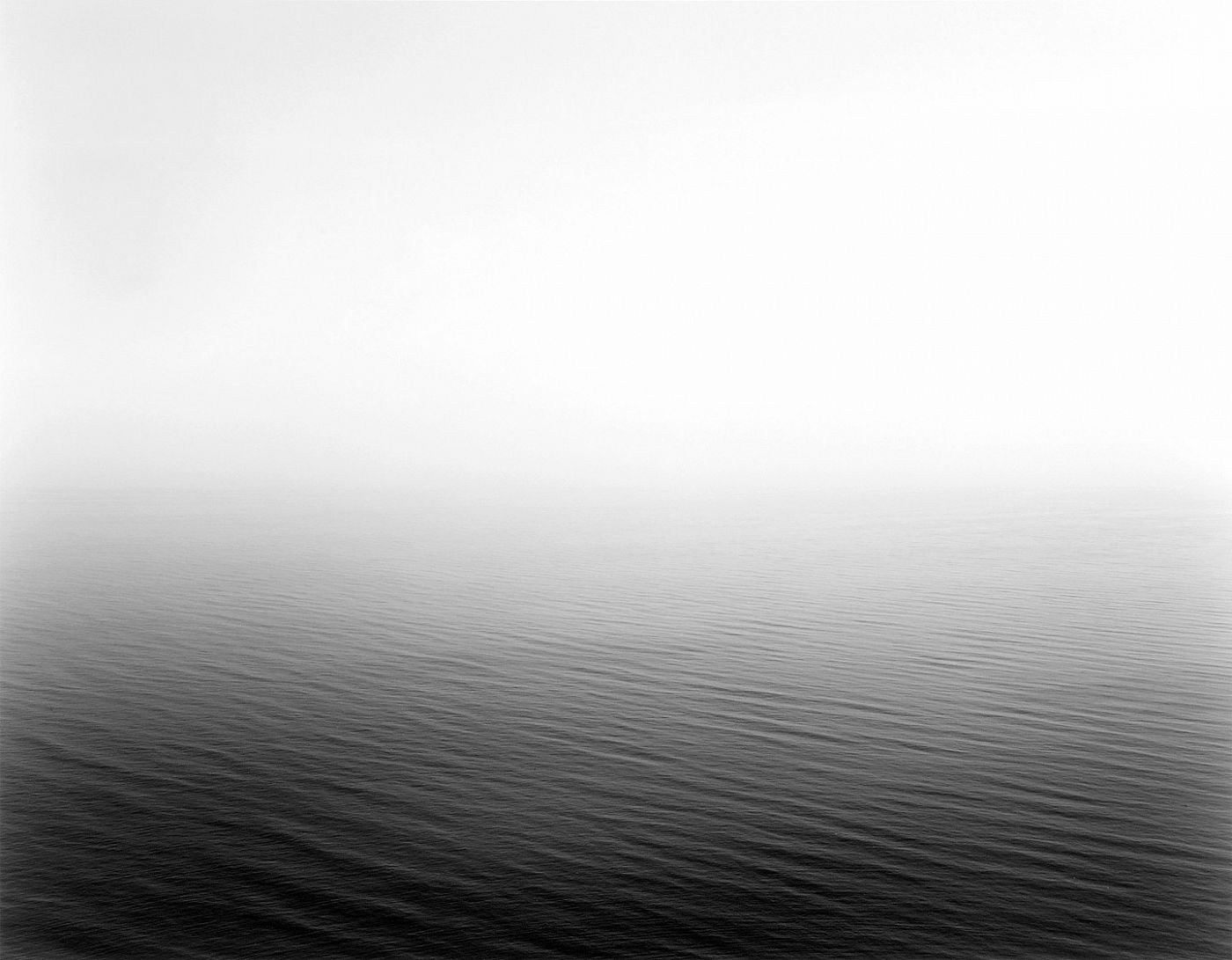Hiroshi Sugimoto born 23 February 1948 is a Japanese photographer and architect. He leads the Tokyo-based architectural firm New Material Research Laboratory. Sugimoto has spoken of his work as an expression of ‘time exposed’, or photographs serving as a time capsule for a series of events in time. His work also focuses on transience of life, and the conflict between life and death. He is also deeply influenced by the writings and works of Marcel Duchamp, as well as the Dadaist and Surrealist movements as a whole. He has also expressed a great deal of interest in late 20th century modern architecture.
Sugimotos work “seascapes” interests me the most of his projects. In 1980 he began working on an ongoing series of photographs of the sea and its horizon, Seascapes, in locations all over the world, using an old-fashioned large-format camera to make exposures of varying duration (up to three hours). The locations range from the English Channel and the Cliffs of Moher to the Arctic Ocean, from Positano, Italy, to the Tasman Sea and from the Norwegian Sea at Vesterålen to the Black Sea at Ozuluce in Turkey. The black-and-white pictures are all exactly the same size, bifurcated exactly in half by the horizon line. The systematic nature of Sugimoto’s project recalls the work Sunrise and Sunset at Praiano by Sol LeWitt, in which he photographed sunrises and sunsets over the Tyrrhenian Sea off Praiano, Italy, on the Amalfi Coast.

All of Sugimoto’s images are very similar as they are all half sea and half horizon. And they are almost like typologies which is similar to the work of Eadweard Muybridge’s typologies. However where these artists are similar they are also different. Both Muybridge and Qingjun both work in colour primarily whereas Sugimoto works in B/W.
Analysis

This image like the others in the “seascapes” projects are a natural black and white image. Also the images are very minimalist which makes it quite aesthetically pleasing. Within this image in particular there is no land or man-made features and unlike the other images this photos splitting line between the sea and the horizon is obscured by the fog and mist. The mist creates a sense of unease and when many people look out to sea we look at the horizon. By having the mist there it forces the eye away from the horizon and toward the sea which is where Sugimoto possibly wants us too look.
